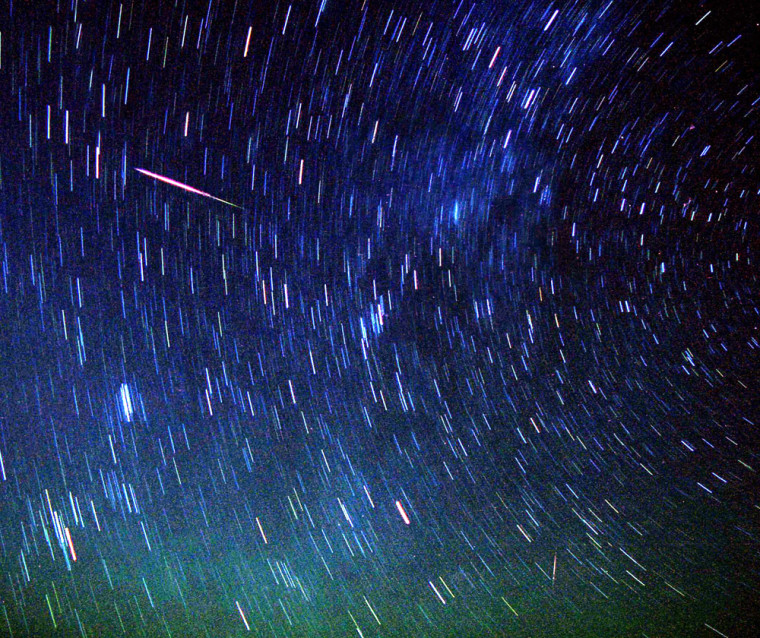There's bad news and good news about this year's Perseid meteor shower, which is traditionally regarded as the highlight of summer skywatching.
First, the bad news: When the shooting stars reach their peak this weekend, the moon is in just about the worst possible location. It's just a couple of days past its full phase, meaning that the moon's bright disk will be glaring down like a cosmic headlight almost all night long.
The good news is that the shooting stars reach their peak this weekend — which gives you an opportunity to get far away from city lights, stay up until the wee hours, see what meteors you can, and still recuperate in time for the work week.
Even though it's an off year, the Perseids are still well worth the effort, said Robert Lunsford, operations manager for the American Meteor Society.
"I would shoot for Saturday morning," Lunsford told MSNBC.com. "You can try Sunday morning. The rates would be slightly less, but still it would be a good show if the skies are clear."
The Perseids start up every year in late July and peak on Aug. 12-13, when Earth passes through a stream of dust particles left behind by Comet Swift-Tuttle. The dust and debris create ionized trails — and even fireballs — as they blaze through the atmosphere.
The orientation of the debris stream means that the shooting stars appear to emanate from the constellation Perseus (which is how the Perseids got their name). However, the streaks can flash anywhere in the night sky, so it pays to take a wide-angle view.
Lunsford said the best bet is to keep the glaring moon behind you, and look toward the northeast between midnight and dawn — when Earth is turning directly into the debris stream. Staying up until dawn should also give you a chance to see Mercury and Venus in the morning sky.
In a good year, you might expect to see 60 to 100 Perseid meteors per hour at the peak, but the moon's interference could reduce the visible activity by at least half, Lunsford said. "It all depends on how hazy your skies are," he advised. "If the skies are hazy and humid, you'll be lucky to see 20 an hour."
If you live in the southern tier of the United States, you should have the best chance of seeing "Earthgrazers" on Friday or Saturday evening, after sunset and before moonrise. "They last much longer because they only skim the thin portion of the atmosphere, and they'll cover long distances," Lunsford said. Earthgrazers are exceedingly rare, but they're said to be colorful, graceful and memorable.
The Perseids may be the year's best-known meteor shower, because it occurs at a time that's tailor-made for lying out on a blanket after midnight (at least in the Northern Hemisphere). But it's not the year's best, Lunsford said.
Traditionally, the Leonids — which peak in mid-November — are counted as the second major meteor shower of the year. But it's been seven years since Earth passed through the heaviest stream left behind by Comet Tempel-Tuttle, the comet that spawned the Leonids. And that means "the best time for the Leonids is behind us, unfortunately," Lunsford said.
"That shower will produce maybe 15 to 25 meteors per hour at best," he said. "That's a far cry from the hundreds or thousands we had around the turn of the century."
No, this year's best meteor shower is expected to be the Geminids, which peak in the Dec. 12-14 time frame. Moon conditions should be relatively favorable, allowing observers with clear, dark skies to see 50 to 60 meteors an hour at the peak, Lunsford said.
Then there's next August: The moon will be virtually a non-issue for the next Perseids, which should make for prime viewing. But there's one little catch for all you Monday-through-Friday types.
"Unfortunately, next year the morning of the 13th will be the best, and that will be a Monday morning," Lunsford said. "It's hard for all those parameters to fall right in line."
Watch for Perseid observing reports on the .
